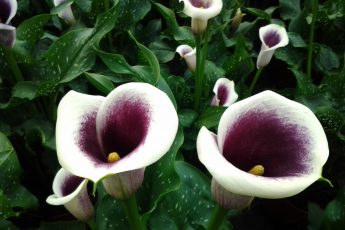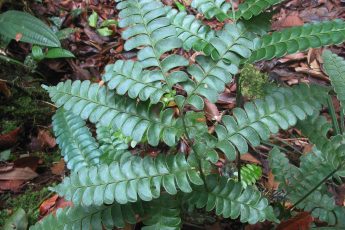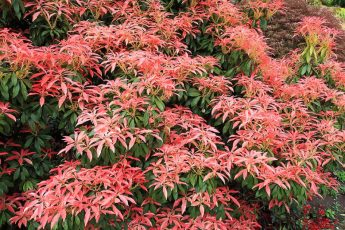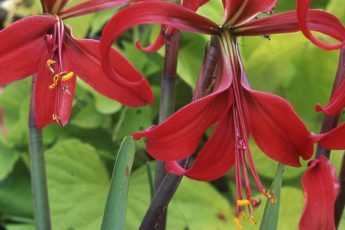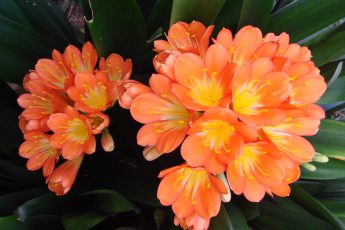Hedera, commonly known as English Ivy, is a charming perennial vine that belongs to the Araliaceae family. Found naturally in the forests of Europe, Asia, and Africa, this robust plant makes for an attractive houseplant, prized for its adaptability and ability to purify air. Whether you’re a novice gardener or an experienced plant enthusiast, Hedera is an excellent choice for indoor gardening due to its ease of cultivation and versatile growing habits.
Understanding the Growth Characteristics of Hedera
Hedera is a herbaceous vine that can thrive in various indoor settings. When grown in a pot, it can reach up to 2 meters in height, making it ideal for vertical gardens or as a trailing plant in hanging baskets. If you wish to maintain a bushy form, simply prune the shoots to around 45 cm. Hedera has a growth rate of 30-45 cm per year, and with proper care, it can live for many years.
Optimal Conditions for Growth
- Temperature: Hedera prefers cooler temperatures, ideally not exceeding 64.4°F in the summer. If temperatures are high, regular misting is essential to keep the plant hydrated and happy. During the winter months, ensure temperatures do not drop below 44.6°F.
- Humidity: This plant thrives in high humidity environments. Daily spraying with soft water is recommended, or at least 1-2 times a week. Placing the pot on a tray filled with wet claydite can enhance humidity, particularly when indoor heating is used.
- Lighting: Bright, diffused light is ideal for variegated forms and H. canariensis, though they should be shielded from direct sunlight. Green-leaved varieties can adapt to lower light conditions, suitable for a north-facing window, shaded areas, or even artificial light.
Soil and Watering Requirements
Hedera thrives in soil that is well-aerated. If the soil is too compact, incorporate sand or perlite with peat. A suitable homemade mix includes one part leaf humus, one part peat, and a combination of light turf and garden soil. Alternatively, a mix of two parts turf, two parts leaf soil, and one part sand works well. Drainage is crucial, so always use pots with drainage holes.
Maintain the soil at a moderate moisture level, watering 1-2 times a week in summer. In winter, reduce watering frequency to every 7-10 days, allowing the soil to dry out slightly between waterings.
Feeding and Propagation
To support its growth, feed Hedera with liquid fertilizers rich in nitrogen and potassium during the growing season, applying 1-2 times monthly. Alternate between organic and mineral options for balanced nutrition.
Propagation of Hedera is straightforward, typically accomplished through apical cuttings. Select 15 cm cuttings with several buds, and root them in moist sand at temperatures between 68-79°F. No greenhouse is necessary, and cuttings can also easily root in water. Layering is another propagation method for Hedera.
Pruning, Transplanting, and Common Challenges
Regular pruning is vital to keep Hedera in shape and promote lush growth. Trim extruded plants to a height of 30 cm, and pinch the tops 1-2 times annually. Ensure the plant has support to climb, or let it cascade in hanging pots. Give Hedera a warm shower periodically for optimal leaf health.
Young plants might require repotting twice a year, transitioning to every 2-3 years in larger pots. If maximum pot size is achieved, simply replace the topsoil annually.
A variety of pests, such as spider mites, aphids, scales, thrips, and mealybugs, may occasionally attack Hedera. Control these pests with insecticidal soap or neem oil. Note that older plants may shed lower leaves naturally. Ensure good lighting to prevent elongated shoots and small leaves. Be cautious of overwatering, which causes leaves to blacken.
Hedera is beneficial for indoor air quality, removing formaldehyde and benzene commonly found in smoke, cleaning agents, and synthetic materials. However, be aware that contact with its leaves can cause skin irritation in sensitive individuals.
With its elegance and versatility, Hedera is a fantastic addition to any plant collection. Its low-maintenance nature, combined with its air-purifying capabilities, makes it a popular choice for those seeking greenery that is as functional as it is beautiful. By understanding and catering to its basic needs—light, water, and occasional pruning—you can enjoy a thriving Hedera plant that enhances the aesthetic of your indoor spaces. So why not invite this resilient vine into your home and experience the many benefits it has to offer?


